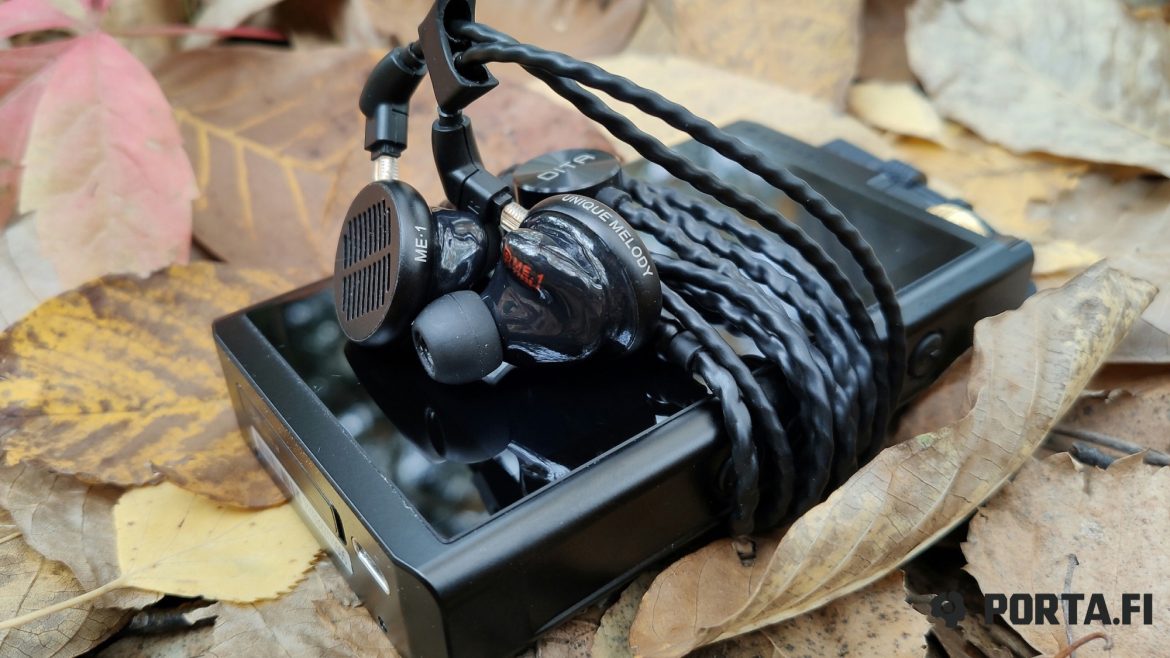Nowadays planars are born again. Everything new is good forgotten past, so portable ortophones and izodynamic earphones have already been portable. Well, almost, since they are very source demanding. Take a look at Yamaha YH-5M photo — this strange and futuristic design is beyond its time. Just don’t try to find its price on different auctions — it may shock you. Yes, it’s strikingly high for a vintage device.
Popular brand Audeze have released their first planar IEMs, but they have forgotten that IEMs should look differently and should have, well, sound. Of course, there is oBravo (also, don’t search for the price), but most of their models are hybrid that combine planar and dynamic driver. Lately planar IEMs theme is very popular — evident advantages of technology and actually new ways of manufacturing overcome the disadvantages of the driver that usually remains very demanding in terms of amplification.
And while planar IEMs continue to appear from different parts of the world, let’s speak about headphones that have become the first planar IEMs. Unique Melody ME 1.
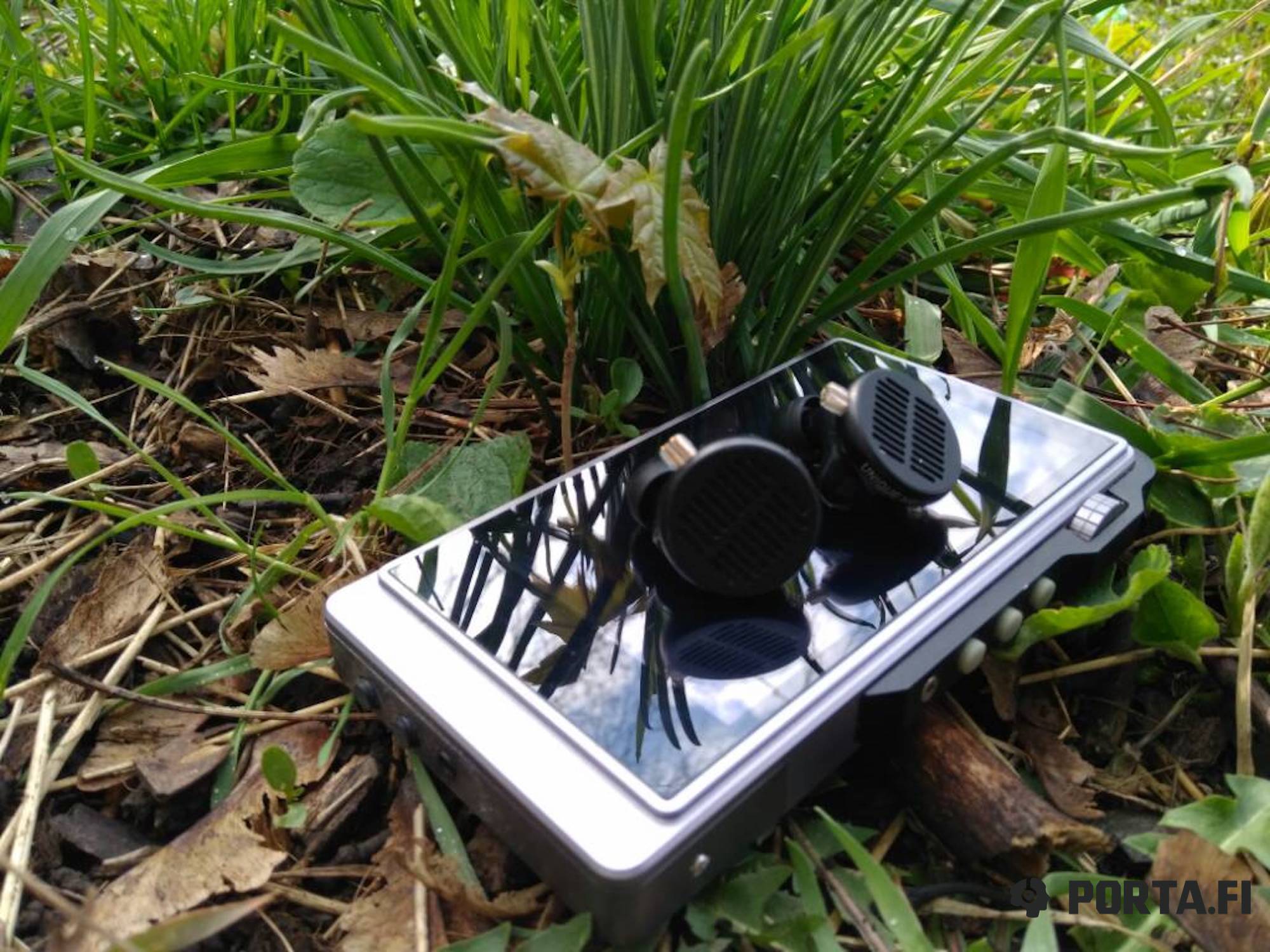
I’ve been following the IEMs since their announcement and after it has been released I have managed to get it. I have heard that UM consider it to be unsuccessful and this assumption is confirmed by almost total absence of marketing. Why is it so? Let’s have a look.
UM stay the same in their approach to packaging. We get a large and striking wooden box with magnets and attractive brand logo on the top. Inside you get 2 pouches — zipped one is made of soft cloth, another is of black silicone that helps to carry and protect cable. It’s soft as well. Those cases look good, but some generic “pelican” case is more practical. In all everything is standard — there are tips, avia adapter, cleaning cloth and everything you might expect. I have tried all supplied tips and put them away, taking JVC Spiral Dots.
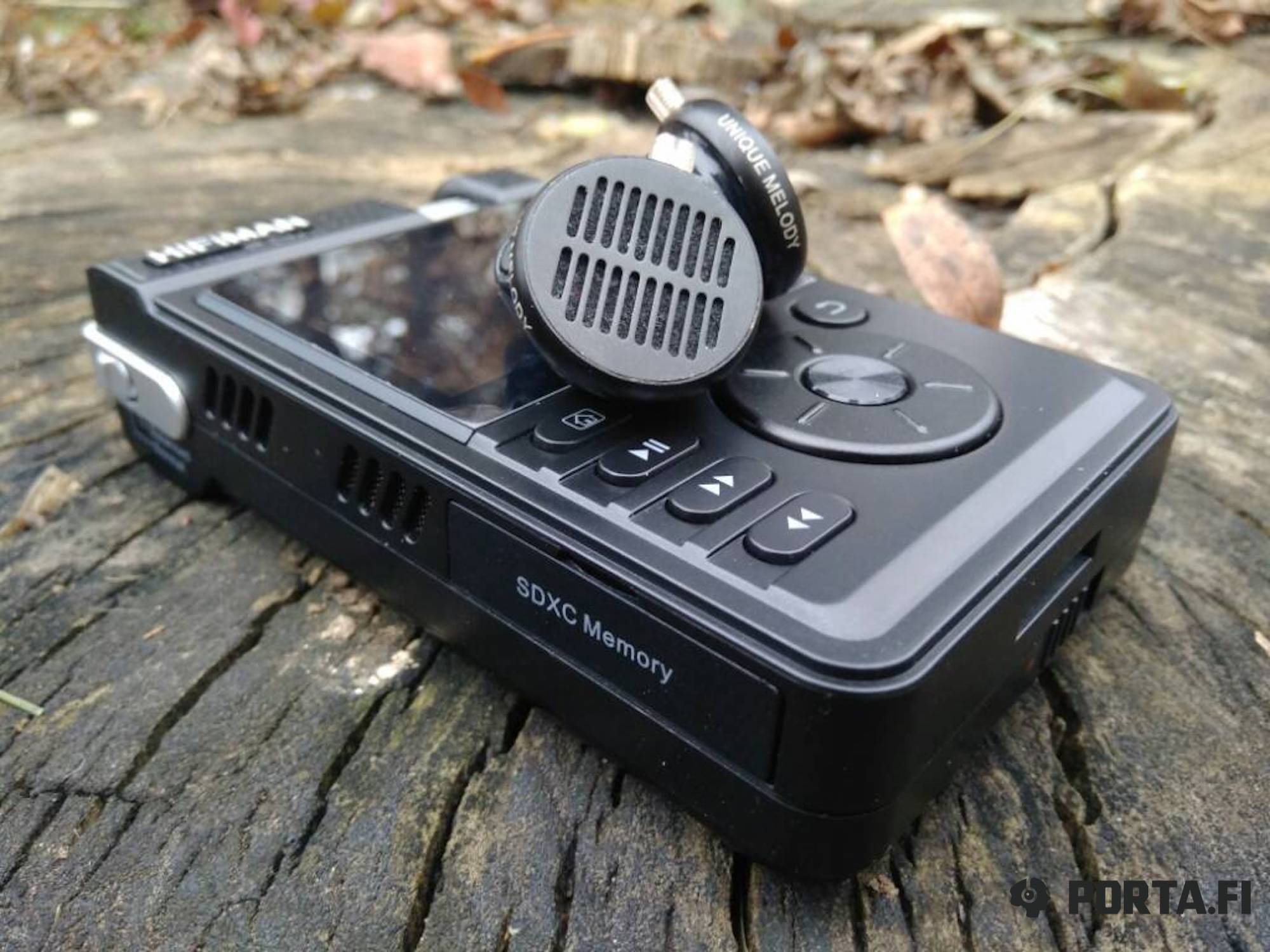
The IEMs are rather large, htey have a round metal grill as a faceplate that covers the driver. The body is acrylic and reminds of universal version of custom IEMs with shape that allows better fixation (we have seen similar approach in iBasso IT03). The name of the model is written in red or blue depending on earpiece. You may choose the color of the inner part during the order, and I know there is black and red variants. The nozzle is of standard diameter and is long enough, but it is plain without any pop to hold the tip in place. The front edge is open and there is a cone spiral that servers an unknown purpose, probably it should prevent IEM from ear wax and dust. Most of tips I tried are very tight with the nozzle and the output is on the level of the tip. It provides comfortable fit in most cases, though. Just above nozzle there is a special module similar to ADEL (own proprietary technology), that is used also to compensate the acoustic pressure for membrane.
Despite rather large body the headphones fit well, although you have to reach and put them better in place from time to time. Regular for UM 0.78 2-pin cable is used. It has special cuts for better contact. The stock cable becomes green over the time and sometimes right after unboxing. It is rather thick and is beautifully braided. Special hybrid construction of many copper and silver-plated copper cores are used.
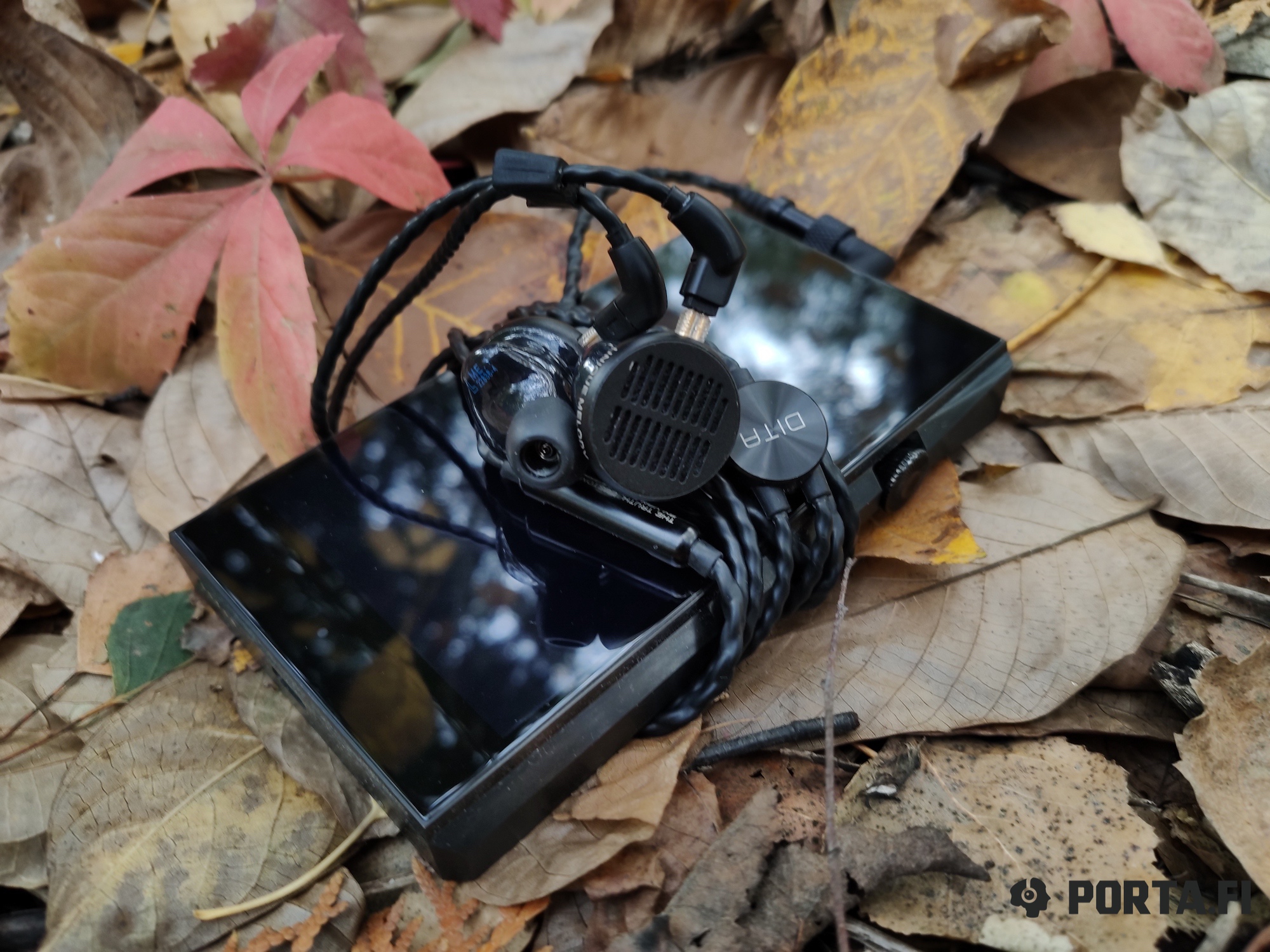
Jack is 3/5 and is rather big with the split supporting it’s size. Cable length is enough to wear it regularly or from the back. There are convenient ear hooks with memory effect. Connectors are tight. You can use another cable but due to the construction it will not look as organic. The stock cable is rather soft but is not good in terms of sound. IEMs are thankful to a cable upgrade and mind that you will have to spend some time to choose the correct variant. Despite being IEMs the headphones have open structure so you won’t be able to effectively use them in subway or plane, however isolation is enough to listen to them in the city. The sound isolation is below average but there is no total absence of it.
In terms of sound the IEMs are good. They have their own character and sound whole, smooth, slightly fat, forcing emotions but not forgetting about musicality, good control and level of details. There is slight disappointment about the fact they are too dark and have rather condensed soundstage, but this allows the IEMs to be tolerant to recording quality. The tips choice is critical and you will also need to spend some time to choose the correct variant in terms of comfort and sound.
Lows are lengthy enough and have good control over all frequency range. Slight fatness and warmth add more monumental approach and weight but deprive bass of delicacy in atmospheric intros. Despite the somewhat weakened textures there is good character and size of instruments. The lows keep good variability and dynamic range and control allows to stay put even on heavy and complex genres.
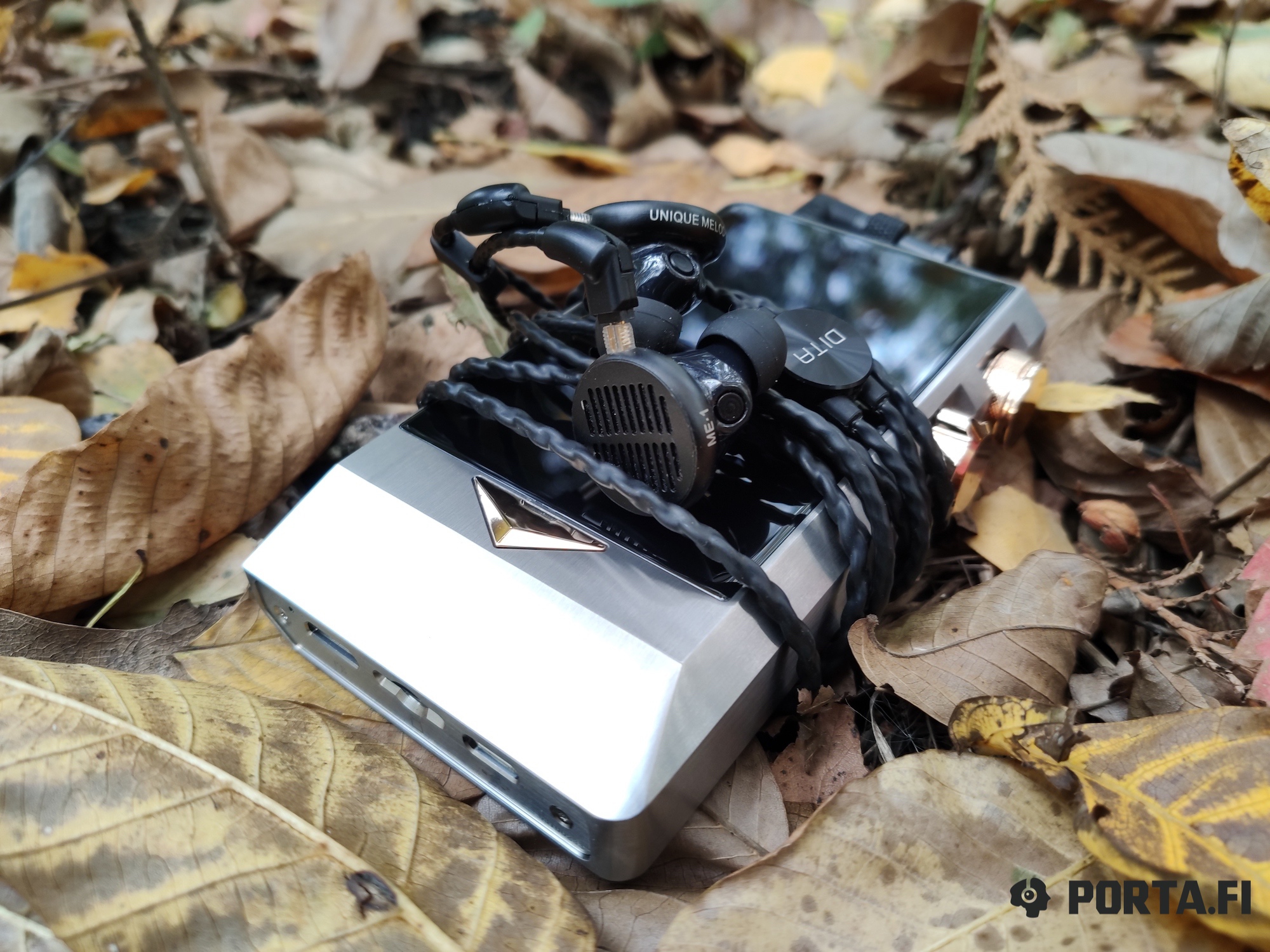
Mids have a little accent and bring additional emotions to overall sound. Together with good separation and layering it provides deep and multi-layered sound palette. The mids have more macro detailed but have enough micro-details still. Different effects applied to vocals, guitar pedals and other things are well heard and differentiated, but on the other hand if there are severe problems in recording quality, you will hear them. IEMs show clear frontman and the sound concentrate on him, however other musicians are not forgotten. Such whole and warm presentation makes the recording sound lively and analogue and any genre benefits from it.
The highs are the most arguable frequency range part. Their presence is below average. Good level of details allows to play all necessary material. Despite the fact that attacks are softened they have enough speed, even if no instrument is leading in the whole composition. Since highs are laid back decays are shortened and they lack neatness, although separation is on a good level. The sound lacks sharpness, it’s smooth, but again, there is enough speed.
The soundstage has good depth but the width is below average, so there is enough volume, but still not exactly monumental sound palette. The FR edges are not too striking and do not have any pressure on listener. Intimate scene results in slight lack of air between the instruments. The instruments interact well between each other.
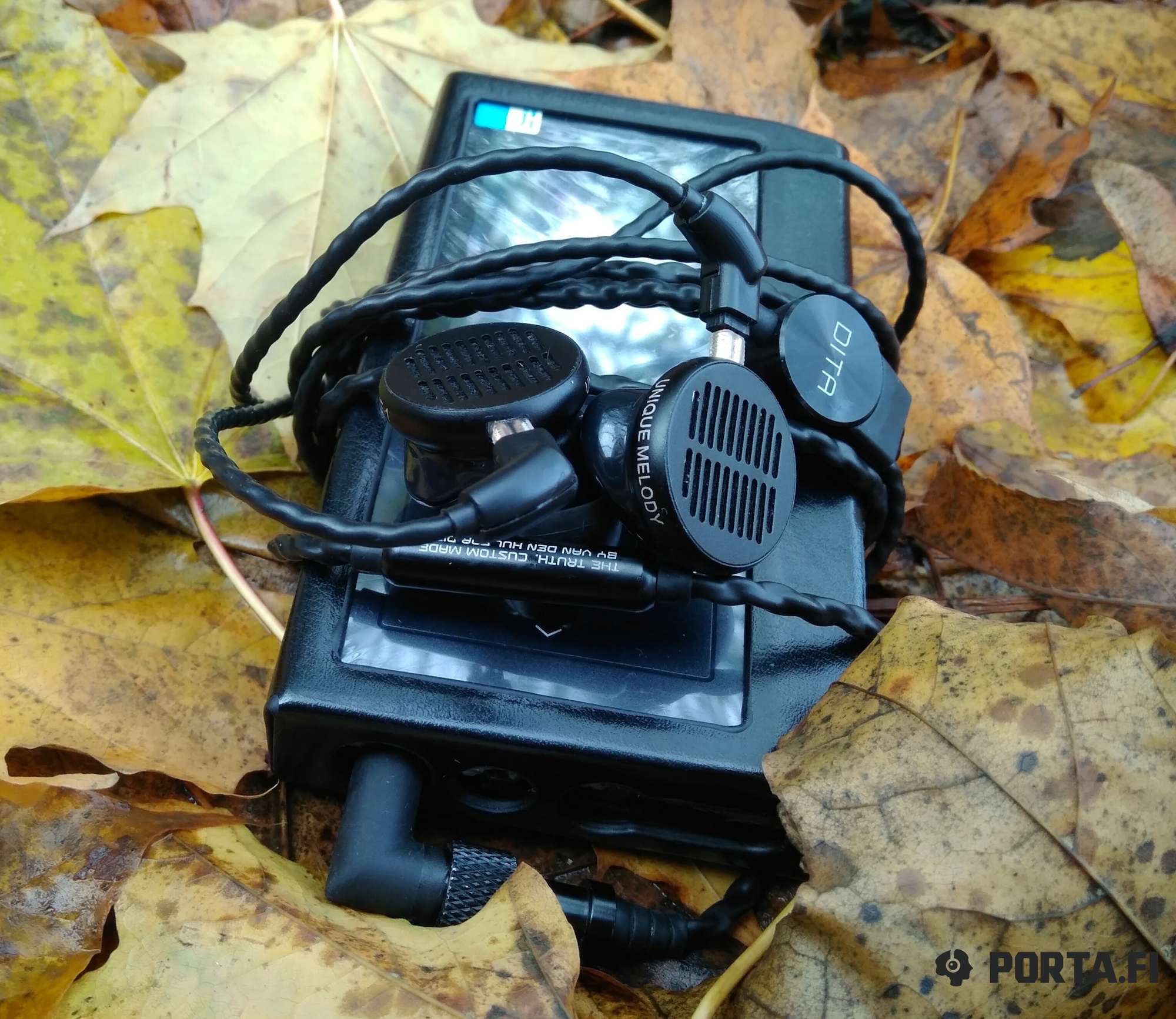
To drive these IEMs the source should be able to control all frequency range well and have high current. It’s not rare nowadays, though. There are no problems with these IEMs pairing with iBasso DX200 amp4, amp4s and amp8, and given the fun presentation of IEMs I also enjoy combination with amp9 as well. Among other good players that do justice to these IEMs there are Cayin N8 and N6-II, AK Kann and Ultima, LPGT and Lotoo Paw 6000. So it’s more of your preference than a problem to find good source for these IEM’s, they are not extremely hard to drive.
Some additional words about the cables. It’s individual and you can’t predict how a certain cable may improve the sound and overall presentation of IEMs. Lately I have admitted that it is end result that matters. The comparison is made with stock hybrid cable. For balanced cables I have used the shortest possible 3.5 adapter to eliminate the difference in sound from different player outputs. There are the following results with the cables I’ve been able to try.
Copper (Australian Lits from era Cables and custom from Soviet copper) offered the best fluidity and smoothness, headphones have got more warmth and weight. Also there have been registered better transitions between layers and total sound has become more whole and analogue. The highs are more lengthy and mids preserve their accents and soundstage benefits from it — it becomes wider and there is more air between instruments. In all, we get emotional and agressive mid-centric sound.
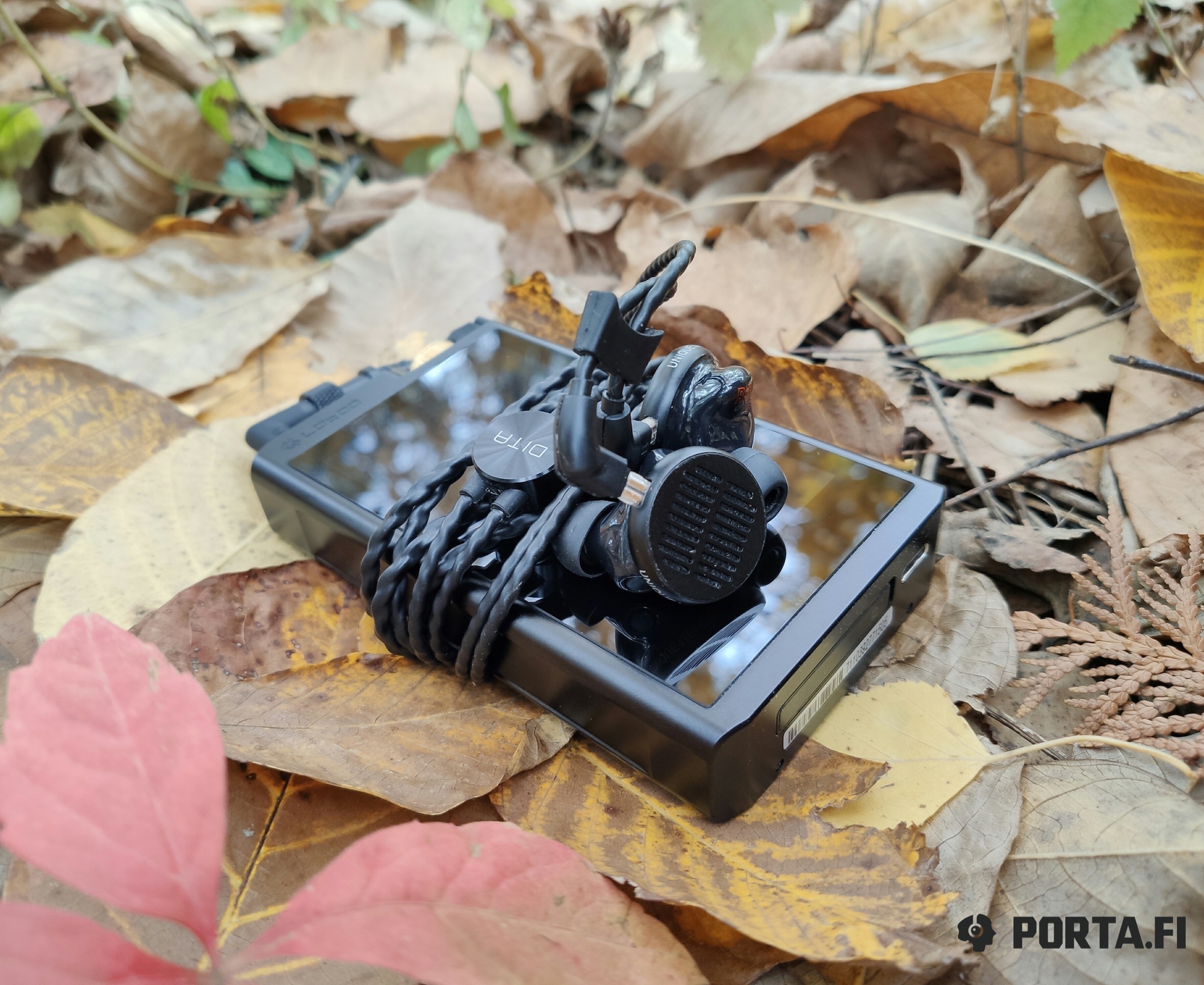
Silver-plated copper. The accent on mids is diminished with more forward lows and highs. The length of those parts of range is increased. The overall presentation remains whole and emotional, but becomes more plain and technical. Micro detail level is higher, dynamic range is better, the sounds are more distinctive and get more shades, overtones, timbres are richer and overall sound becomes more aggressive. The soundstage is wider with preservance of the same depth, there is more air between instruments and their size is more correct. In this setup the IEMs are still sounding dark, but not as dark as in the stock variant.
Silver (Dta the Truth replacement cable and Whiplash TwAg v2). The accent on mids is less than in stock variant, but more than with silver-plated copper. The frequency range borders are wider, lows are more textured and variable, instruments are processed better. Highs are more natural and neat. This variant for me is the most natural and optimal for me.
To sum up, the IEMs are really controversial, but there is no reason to consider them unsuccessful.
The sound is fun and non-typical for UM. It’s also rather costly to produced planars in such body. Besides, the body itself is not small enough and the IEMs are critical to correct fit. This of course doesn’t add popularity to the model. However, audiophiles are stubborn and you shouldn’t write off the model only because there are some hardships.
Translated by: Vadim Kolchev

